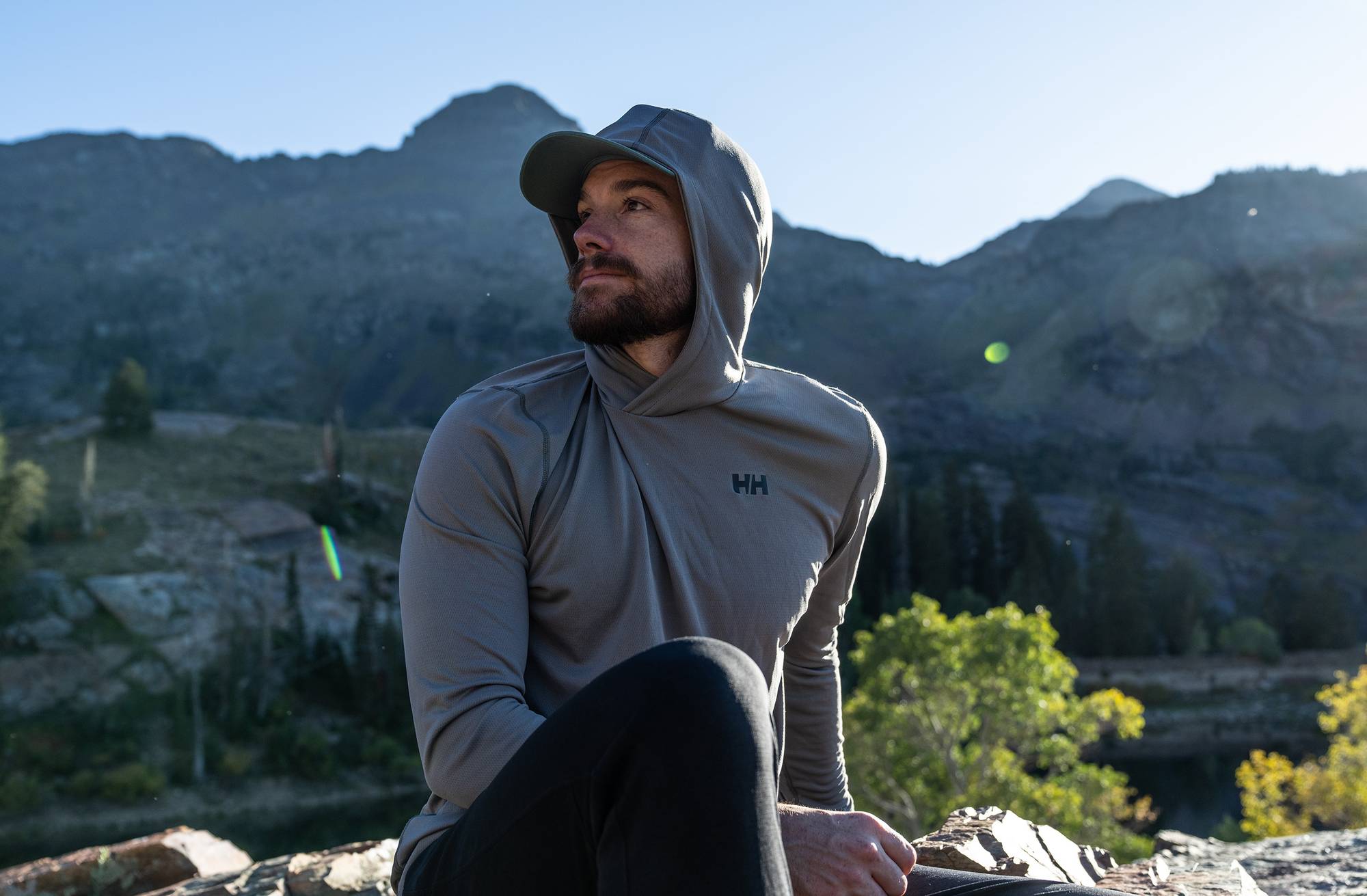Sept 21, 2023 | Updated May 10, 2024 | Helly Hansen
Choosing the right base layer is the foundation of an enjoyable adventure. Our guide explains their purpose and how moisture-wicking materials, fabric weight and fit can affect comfort in the outdoors.
WHAT IS A BASE LAYER?
A base layer is a piece of clothing, made from materials that are designed to keep you comfortable in changing conditions and activity levels. Its main purpose is to transport moisture away from the body so you can stay warm and dry.
Our base layers for men and women are available in a range of garments - from short-sleeved to long-sleeved tops and from shorts to pants.
BASE LAYER MATERIALS
Most base layers are made of either synthetic material or merino wool. These are the most common materials, though you may come across silk on the rare occasion. Whichever you choose, they each offer their own benefits and drawbacks. We recommend that you steer clear of a cotton base layer because it absorbs moisture like a sponge. One sweaty day in cotton may leave you feeling cold and damp, instead of dry and comfortable.

SYNTHETIC BASE LAYERS
Synthetic base layers are made of material like polyester, nylon, or polypropylene. Our range of LIFA® Active and Solen base layers use LIFA®. This unique fabric is based on a yarn technology that moves moisture away from the skin and transports it to the surface of the fabric, where it evaporates, keeping you warm, dry and comfortable.
WHEN TO USE SYNTHETIC BASE LAYERS
High intensity activities where you build up a sweat.
Water-based activities in spring/summer.
If packing light is a priority.
EXPLORE LIFA® ACTIVE
LIFA® Active is our most versatile base layer range. It has the moisture wicking qualities to keep you cool as you build up a sweat. And with a light touch of insulation, it's a popular choice for year-round use.
EXPLORE LIFA® ACTIVE SOLEN
For summer adventures, our Solen collection also offers moisture-wicking qualities with the added benefits of better odour control and long-lasting sun protection from UPF 25, up to UPF 50. Sun protection can be important to consider for base layers, as it often becomes the last line of defense between you and the sun as temperatures warm up.
PROS OF SYNTHETIC BASE LAYERS
Breathable
Cost-effective
Durable
Effective at wicking away moisture
Machine-washable
Quick to dry
CONS OF SYNTHETIC BASE LAYERS
Can start to smell in a short space of time
Takes longer to degrade
Top tip: synthetic base layers can smell a bit more than Merino wool, but there are steps you can take to quench the stench.
MERINO WOOL BASE LAYERS
Merino wool is a natural fiber grown by Merino sheep, and a popular choice for base layers due to its natural moisture management qualities. Merino wool on its own is more susceptible to wear and tear, which is why we combine it with other materials (to enable longer-lasting use).
WHICH MERINO WOOL BASE LAYER IS BEST?
Our most popular merino wool base layers are called LIFA® Merino and feature a 2-layer construction: the inner layer is made using 100% LIFA® to help push moisture away, the outer layer is made from 100% Merino wool to help absorb and wick away moisture.
We believe that this combination of synthetic and wool materials delivers the best of both worlds — warmth, durability, and moisture management.
If you're taking on tougher terrain, we've got an exciting new range called Durawool. With a blend of of 55% ZQ-certified merino wool and 45% Cordura®, Durawool gives you an extra edge when it comes to tackling brush.
WHEN TO USE MERINO WOOL BASE LAYERS
Longer duration activitiesStop-and-go activities
Low intensity activities
Extremely cold conditions
PROS OF MERINO WOOL
Temperature regulationOdor control
Easy to care for
Better shape-retention of garment
CONS OF MERINO WOOL
Less cost-efficientLess durable
Slower to dry
FREQUENTLY ASKED QUESTIONS
CAN YOU WEAR A BASE LAYER ON ITS OWN?
Yes! A base layer can be worn either as a single layer or under another garment. If you're heading into unpredictable conditions or hiking over multiple days, we recommend that you adopt a 3 layer system where you start with a base layer, add a midlayer (fleece or woollen jumper) and finish with an outer layer (like a shell jacket).
SHOULD YOU WEAR ANYTHING UNDERNEATH A BASE LAYER?
Ideally, any next-to-skin clothing (including bras and underwear) should offer moisture-wicking qualities. As a rule of thumb, we recommend synthetic in the summer and wool in the winter. Remember that the more snug the fit, the more effective your next-to-skin clothing will be at transporting moisture away from your body, keeping you comfortable and dry.
WHAT SIZE BASE LAYER SHOULD YOU LOOK FOR?
We recommend you go with your normal size because we already take into account that base layers should fit as close to the skin as possible.


